Sounding Off: Our Blog
Thoughts, insights, and perspectives on the latest news, trends, and issues regarding architectural acoustics, environmental and industrial noise and vibration, and audiovisual systems design.
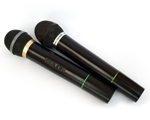
Whitespace Frequency Update for Wireless Microphones and the FCC
The world of wireless microphones continues to evolve and become more complicated with every passing day. Just a brief re-cap of the last couple years: The FCC has passed a series of rules over the last few years to move the analog TV stations out of the 700MHz band and force them to broadcast all digital signals. The 700MHz band was then sold off at auction to private companies. This band of frequencies was one of the most popular for wireless microphones and the auction meant that this band could no longer be used for wireless mics. The latest rule from the FCC mandates that all secondary users of frequencies in this range must cease operation by June 10, 2010, regardless of whether there is specific interference.

SoundHealthcare2010 – Healthcare Acoustics Seminar – 2010 FGI Guidelines for Design and Construction of Health Care Facilities
The 2010 FGI Guidelines for Design and Construction of Health Care Facilities was published in January and adopted as building code by many states. How will you deal with the new noise, privacy, and acoustical requirements for healthcare facilities? Join us at SoundHealthcare 2010, a Health Care Acoustics Seminar, and find out what you must know about the new FGI Guidelines for HIPAA Compliance and LEED HC. There is no charge to attend this 90-minute seminar, but you must register in advance.
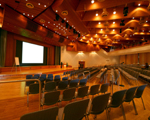
Is Technology the Bottom Line for Web Conferencing and Videoconferencing?
Sure, we all agree that the principle of “garbage in garbage out” applies to audio-visual technology. But is “top of the line equipment” the real bottom line for state of the art web conferencing or videoconferencing? Answer: It’s one of the bottom lines, but not the only bottom line. There are a lot of other factors that go into optimizing a space for web or videoconferencing.

Are Construction Administration Services Really That Important?
For many of our larger projects, we offer Acoustical Consulting Construction Administration Services as an additional option. Unfortunately, not all clients invest money on this service. Our frustration extends well beyond the revenue side of the project (the CA services are usually a very reasonable addition to the project budget, relative to Design Services). Sometimes our clients opt out of CA services, ending our involvement with the project after a review of the construction drawings and the specifications. We find that many clients view the additional services as non-essential. After all, “all the information is in the drawings and the specifications.” I would completely agree with the sentiment in an ideal world, but experience has shown this world is rarely, if ever, ideal. There are some clients, however, that have welcomed this form of service from our company, and I’d like to share one of their successes.

Acoustics By Design selected as one of “West Michigan’s 101 Best and Brightest Companies to Work For”
Acoustics By Design, an independent acoustical consulting and audio-visual design firm headquartered in downtown Grand Rapids, was recently selected by the Michigan Business & Professional Association as one of “West Michigan’s 101 Best and Brightest Companies to Work For.” 2010 marks the fourth consecutive year that Acoustics By Design (ABD) has received the award.

Take The Poll. What is the Biggest Challenge Facing LEED?
Let’s face it, the LEED Green Building Rating System™ is facing some big challenges. The much heralded LEED for Healthcare program was supposed to be released in early 2009, but it is still sitting on the shelf unreleased. The LEED for Schools program has not been met with wide acceptance (since its release in 2007, only 26 schools have been certified under the program, as of this blog posting. See for yourself). And across the industry we are hearing of people who want to build projects to LEED specs, but without LEED certification. Whether or not that’s a good thing, is a topic of controversy.
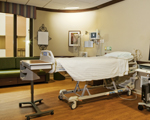
Mechanical Background Sound in Exam Rooms
January 2010 held a highly anticipated milestone for acoustical consultants. The definitive guide called 2010 FGI/ASHE Guidelines for Design and Construction of Health Care Facilities has a greatly expanded acoustics section in this year’s edition. How will you deal with the new noise, privacy, and acoustical requirements for healthcare facilities? Join us at SoundHealthcare 2010, a Health Care Acoustics Training Seminar, and find out what you must know about the new FGI Guidelines for HIPAA Compliance and LEED HC.
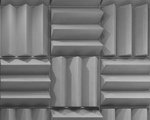
Anechoic Chambers – What They’re All About
So what in the world are anechoic chambers? In short, they are the consultant’s and manufacturer’s best friend when it comes to acoustics. Anechoic chambers are primarily used for a variety of acoustical measurements that determine just how much noise a product is making. These chambers are most notable for their strange appearance… their foam filled walls, ceilings, and sometimes floors of spikes look a bit like a Nerf torture chamber; if you filled them with plastic balls they’d be a hit attraction at your local Chuck E Cheese. But alas the soft spikes are not meant for harm or play but rather to absorb as much sound as possible, so that you can measure the true sound emitted or reflected off of whatever noise source you are interested in.
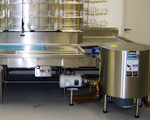
How to Gradually Reduce Employee Noise Exposure
Industrial plants are most often loud and dynamic work environments. Noise fields are complex with varying levels of noise produced by many different pieces of equipment, and employees spend varying amounts of time near the different noise sources. Sound levels are even impacted by the building, with taller spaces generally quieter than single story spaces, sound absorbing room finishes sucking up some of the noise, and partitions blocking sound. Measuring worker noise exposure is simple.
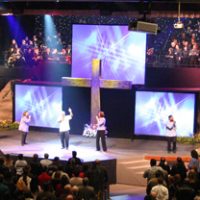
How Churches Use Multiple Screens in Worship
My last blog discussed using a large video screen as the backdrop for your church stage. We discussed the benefits of using that type of technology. Today, we’ll move beyond the single screen. There are several reasons why we we would consider using multiple screens to decorate the auditorium of a church. This blog features photos from my time on staff at Northridge Church in Plymouth, Michigan.